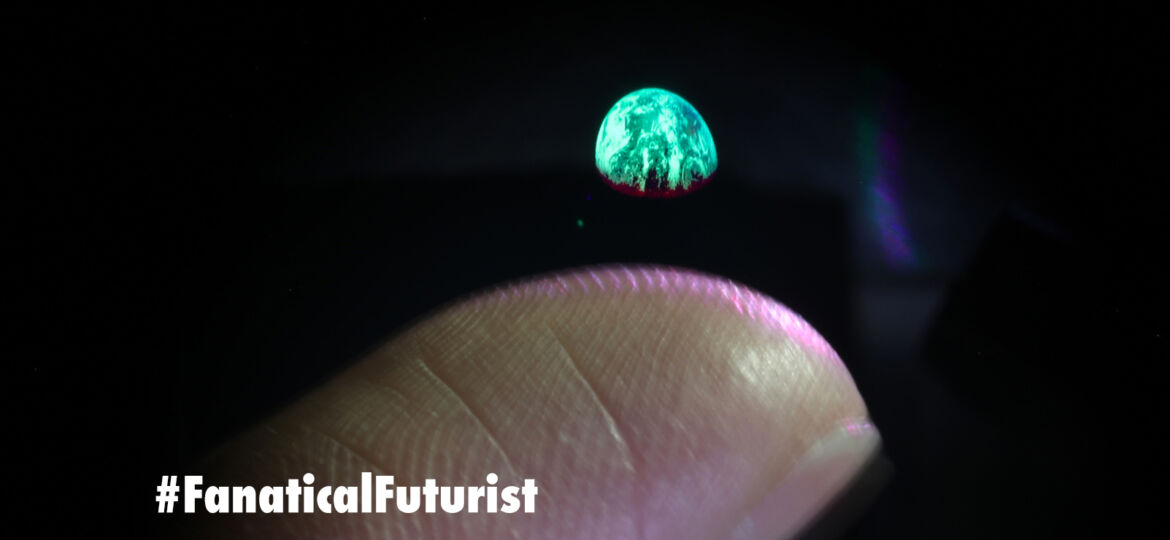
WHY THIS MATTERS IN BRIEF
Scientists, and society at large, have been waiting for holograms technology to appear on the market for decades, and while you’ll still have to wait before you can buy one in the shops we’re starting to edge closer to realising the dream.
Science fiction movies, like Avatar, Iron Man, Prometheus and, most famously Star Wars, almost always include 3D holograms that you can see from any angle, but so far, in today’s world, the reality, other than a breakthrough last year that created floating 3D plasma holograms you could touch using femtolasers has been much less exciting. Until now that it is.
Here’s the thing though… do you remember the Princess Leia hologram from Star Wars? Of course you do, well, apparently, according to scientists, it’s not a hologram at all, it’s something called a Volumetric Image, but all that aside now a team of researchers from Brigham Young University (BYU) in the USA have managed to recreate the hologram, er, volumetric image and the results, that you can see below in the video, are staggering.
The Holograms In Action
“We can think about this image like a 3D printed object,” said BYU assistant prof and lead author Daniel Smalley.
The team used something called an “Optical Trap Display” to create their volumetric images. The difficulty with holograms so far is that you need something to reflect the laser light so your eyes can see it. BYU’s device uses lasers to trap a tiny particle in free space, or as we call it, the air, that can force it to move in a path, much like how electromagnets deflect the electron beam in a CRT television, then other blue, red and green lasers illuminate it. And if the particle moves fast enough, it creates the illusion of a solid, animated holographic image. Heck, let’s just call it a hologram, after all that’s what it is… even if that isn’t the right scientific term for it.
“A single point was dragged sequentially through all these image points, and as it did, it scattered light,” said Smalley, “and the accumulated effect of all that scattering and moving was to create this 3D image in space that is visible from all angles.”

















[…] the fact that everything you know as science fiction today is already becoming science fact, from holograms, light sabres, and tractor beams, to deflector shields and telepathy – let alone everything […]
[…] 3D Printing w/ Light […]